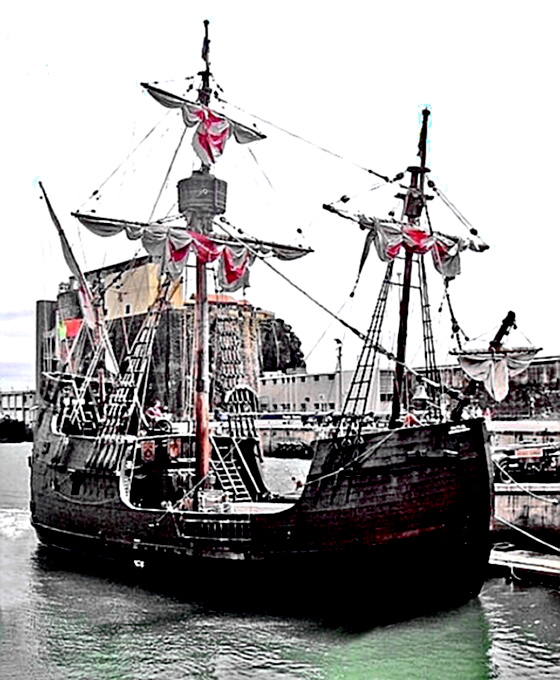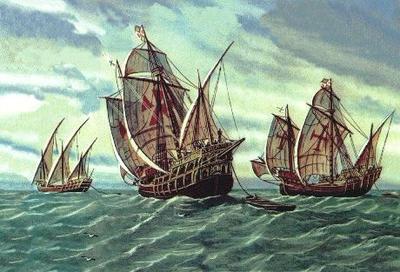

This flag of Columbus appears in Crampton 1990 with a swallowtail. The pennant fromĬhristopher Columbus ship, the Santa María, was as long as the mast and bore the royal arms, the motto Tanto Monta and a crucifix. I send the flags from the book Calvo and Grávalos 1983 used byĬhristopher Columbus when he landed in San Salvador island. Nobody can prove that, but, anyway, the celebration is because he arrived at America, and he did that in the name of Spain. They claimĬhristopher Columbus was Italian. Patrick's day, as the Irish festivity, like a mirror to look at, and found the national holiday of Columbus Day as a chance to make themselves present. Large amount of Italian immigrants have historically seen St. As for "the kings of Spain used to fly the flags of the different kingdoms that joined together at the end of the Middle Ages," Castile and Leon were the realms of Elizabeth Ferdinand was the King of Aragon.Ĭolumbus Day has been taken over in the United States by the Italian community as "their" festivity. I don't think that his expedition is known to have carried any other flag. This is not a perfect description, so interpretations differ. The original documents of Columbus' expeditions describe a banner (apparently ecclesiastical-style, hung from a crossbar and forked at the bottom), white with a green cross and the crowned initials F and Y. It is funny that the usual English name for that queen, rather than Isabel or Elizabeth, is Isabella which is neither proper English nor Spanish. The letters F and Y stand for "Fernando" and "Ysabel" (nowadays spelt "Isabel"). The Catholic Kings were not the Kings of Castile and Leon – Ferdinand was King of Aragon and Sicily, Elizabeth was Queen of Castile and Leon. Some historians argue that this is the reason why so few Aragonese-Catalan conquerors travelled to the Americas. However, strictly speaking, Columbus travelled only on behalf of Elizabeth, Queen of Castile and Leon. These were the first European flags to fly over America – provided the Vikings did not display one earlier. Source: Calvo and Grávalos 1983, illustrations nos. With these three flags he took possession of Guanahani island (nowadays San Salvador).
/cdn.vox-cdn.com/uploads/chorus_image/image/64455762/1347332.0.jpg)
The Vanderlyn portrait seems to portray this as a banner/pennant ending in a swallowtail.Ĭhristopher Columbus wrote in his logbook that on October 12th 1492 he picked the Royal Flag, and his captains two flags which the Admiral carried in all the ships as Ensign, each white with a green cross formy couped addorsed by old Gothic letters 'F' and 'Y', both green and crowned with golden, open royal crowns, for Fernando and Ysabel. One version that I have seen, from Spain, was arranged so the flag hung as a banner, although most all that I have seen sold in catalogues are arranged as a flag. It was originally described as the Expeditionary Banner in some catalogues when it first came on the market. I hesitate to call the Columbus flag – as described image by Dov Gutterman – a flag, at least in the original sense. Capitol rotunda) depicting the landing shows the castles and lions flag and in the booklet Columbus in the Capitol, Quincentenary Edition it is noted on page 5 shows the Castile and Leon flag, which is the flag under discussion. In Washington, an 1846 painting image by John Vanderlyn (U.S. US commercial sites sell a historical "Columbus flag" which is not the Castile and Leon one but a standard containing the initials F (Fernando) and Y (Ysabel) with a cross between the initials and crowns above them. The Spanish flag being relatively new – it was first used at the end of the eighteenth century – the kings of Spain used to fly the flags of the different kingdoms that joined together at the end of the Middle Ages.

The Castile and Leon flag is reputedly the first to have flown on American territory, since it was the one used by Christopher Columbus on behalf of the Spanish government who subsidized his journeys. Legendary "Purple Banner of Castile" or "Commoners' Banner" ( Pendón Morado de Castilla or Pendón de los Comuneros)Ĭaptain's Ensign of Columbus' Ships ( not Columbus' personal flag).Historical Flags (Castile and Leon, Spain).Keywords: coat of arms: quartered (counterquartered) | columbus (christopher) | cross: formy (green) | letters: 2 (green) | fy | crowns: 2 (yellow) | conquistador | This page is part of © FOTW Flags Of The World website Christopher Columbus' Flags, 1492 (Spain) Christopher Columbus' Flags, 1492 (Spain)


 0 kommentar(er)
0 kommentar(er)
